Search results for “tomorrow fund”
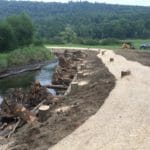
Restoration construction efforts on this section of the Salmon Kill were almost complete when this picture was taken. Trout stream restoration projects can make a big immediate visual impact, but the real payoff comes over time. Still, it was a nice surprise when crews doing some stream sampling work at a restoration site on Connecticut’s…
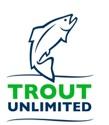
TU Logo_2015.jpg February 18, 2016 Contact: Chrysten Lambert, Director, Oregon Water Project, (541) 973-4431 clambert@tu.orgBrian Johnson, California and Klamath Director, (415) 385-0796 bjohnson@tu.org FOR IMMEDIATE RELEASE: Klamath Basin Rangeland Trust and Trout Unlimited announce merger, award of $7.6M from NRCS to support partnerships with agriculture in upper Klamath Basin Klamath Falls, Ore.The Klamath Basin Rangeland…
Washington projects featured at White House as models for future Yakima and Methow showcased in summit focused on water resources and sustainability CONTACT: Lisa Pelly / Director of Trout Unlimited’s Washington Water Project lpelly@tu.org / (509) 630-0467 (March 23, 2016) Wenatchee, Wash. A local project focused on fixing an aging irrigation-water delivery system garnered national…

By Dave Atcheson Most Alaskans are painfully aware of the recent downturn in king salmon runs on many of our streams. The numbers of returning Chinook salmon have remained alarmingly low for the last several years, prompting fishing closures in many areas, including the previous season’s closure of the entire Southeast region. It was with…

Editors note: This is the third in a three part series looking at the myths perpetuated in the national discussion about national monuments and the Antiquities Act. By Corey Fisher The issue of national monuments and the Antiquities Act tends to elicit passionate responses, both for and against. It also spurs misconceptions. Here are some…
/wp-content/uploads/2019/05/blog/4.png Editors note: This is the third in a three part series looking at the myths perpetuated in the national discussion about national monuments and the Antiquities Act. By Corey Fisher The issue of national monuments and the Antiquities Act tends to elicit passionate responses, both for and against. It also spurs misconceptions. Here are…
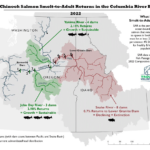
Near the dramatic jagged peaks of the Teton mountains sits Jackson Lake Dam.
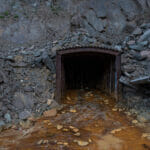
New recommendations include providing Good Samaritans with liability protections to clean up abandoned mines, modernizing mining laws, and improved permitting processes. Contacts: Arlington, VA. (September 12, 2023) – Today, the Biden Administration released a new report, Recommendations to Improve Mining on Public Lands, from the Interagency Working Group on Mining Reform with policies to support…
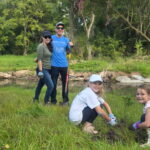
The official start to summer in New York coincided with another historic storm coming on the heels of a very rainy spring. A little extra rain amplifies lush green landscapes and healthy flowing rivers. However, we’ve again witnessed what happens when massive storms carrying a deluge of water and debris, head directly for a small community like the Village of Waterville. Local partners are collaborating to stabilize Big Creek to be more resilient when…
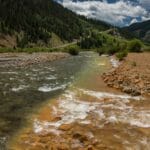
Contaminated abandoned mine drainage polluting the Animas River near SIlverton, Colorado. Trout Unlimited photo. WASHINGTON, D.C. — Trout Unlimited President and CEO Chris Wood testified before Thursday the House Natural Resources Subcommittee on Energy and Mineral Resources on the need for legislation and funding to facilitate the cleanup of abandoned hardrock mines. Click here for…
March 21, 2018 FOR IMMEDIATE RELEASE Contact: Jenny Weis, Alaska communications director, Trout Unlimited, (952) 210-7095 or jweis@tu.org U.S. Army Corps of Engineers to open brief opportunity for public to shape analysis of Pebble Mine plan Anglers and fishing business owners urge comprehensive, thorough impact analysis and extended comment period. ANCHORAGE, AK -The U.S. Army…
For immediate release June 27, 2018 Contact: Steve Moyer, TU government affairs, smoyer@tu.org, 571-274-0593 Randy Scholfield, Trout Unlimited communications, 720-375-3961, randy.scholfield@tu.org Senate reauthorizes program that helps farmers and ranchers conserve water Program helps ease impacts of long-term drought in Colorado River Basin Washington D.C.The Senate voted Monday to reauthorize a program that helps farmers and…
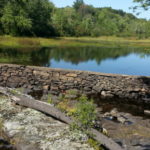
By Chris Wood Last week, I saw a video celebrating the removal of the Tack Factory Dam on Third Herring Brook in Massachusetts. Like all dam removals, it involved many partners especially the North and South Rivers Watershed Association, local TU chapters, the MA/RI Council, NOAA, and Steve Hurley of the Massachusetts Division of Fisheries…

There are many things rural California landowners can do to leave more water in streams for fish and wildlife. Most involve changes to water use practices that will also increase the security of the landowner’s water supply. So why don’t more landowners do this? One answer is California’s complex system of water rights. It can be difficult to…
Sportsmen/women organizations today gathered in Idaho Springs to support Gov. Jared Polis’ executive order to preserve historic migration corridors, along with family hunting and fishing traditions for future generations. Gov. Polis’ executive order directs state departments to coordinate with federal, state and local governments, private landowners, conservationalists and others to protect wildlife through conservation of…
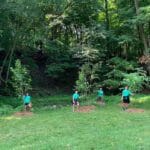
Trout Unlimited has received funding from the U.S. Department of Agriculture, Forest Service through the Great Lakes Restoration Initiative to plant nearly 17,000 trees along coldwater streams in Michigan. The project, “Reducing Runoff in the Rogue River Watershed,” aims to address stormwater runoff that pollutes, erodes and warms the important West Michigan trout fishery by…
Thirty years ago nobody even knew what Questa was. Not today. You’ll see people from all over when you’re out elk hunting. George and Lori, Outfitters and business owners in Questa “It’s more of a spiritual accomplishment for me to go down to the Rio Grande and find a Rio Grande cutthroat. To know that…
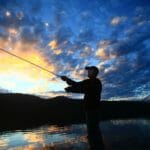
The impacts of dams on anadromous (sea-run) fish are well documented. But today, many dams have outlived their usefulness, or become unprofitable or unsafe. Removing such dams is now a proven way to recover salmon and steelhead populations. Trout Unlimited has supported the removal or retrofitting of dams on a number of high-profile salmon and…
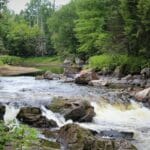
The New York council of Trout Unlimited is urging TU members to comment on the state’s recently released Draft Fisheries Management Plan for Inland Trout Streams. The plan will provide a detailed road map for protecting trout waters and informing management decisions to improve fishing for trout, among the state’s most sought-after gamefish. The Department of Environmental Conservation made the plan public on May 29, 2020. The deadline…
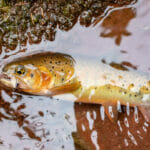
By Ty Churchwell Just eight miles from Durango’s city limits is the 107,000-acre Hermosa Creek Special Management Area and Wilderness. Enacted in 2014, the Hermosa Creek Watershed Protection Act is the result of a community coming together for a favorite backyard playground for locals and a destination for America’s public land visitors who flock to the San Juan Mountains of southwest Colorado each year. Prior to the passage of the…















